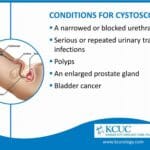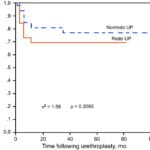Understanding and accurately documenting pain, especially chronic pain, is essential for effective treatment and healthcare management. This guide provides a comprehensive overview of ICD-10 codes related to inguinal pain, offering clarity for both patients and healthcare professionals. Proper coding ensures appropriate care, accurate billing, and contributes valuable data for research and public health initiatives.
Decoding Inguinal Pain Codes
Experiencing groin pain can be debilitating, and accurate diagnosis is the first step toward relief. ICD-10 codes are the standardized language healthcare providers use to describe medical conditions, ensuring clear communication among all parties involved in a patient’s care. When it comes to inguinal pain (the medical term for groin pain), selecting the correct code is paramount for effective treatment and insurance processing.
ICD-10 codes categorize health problems with remarkable specificity. Different codes exist for pain in various areas of the groin, allowing healthcare professionals to pinpoint the location and nature of the discomfort.
Some of the most frequently used ICD-10 codes for inguinal pain include:
| Code | Description | Potential Interpretation |
|---|---|---|
| R10.2 | Pelvic and Perineal Pain | May suggest general pain in the groin area |
| R10.813 | Right Lower Quadrant Abdominal Pain | Probably indicates pain in the lower right abdomen, often radiating to the right groin |
| R10.30 | Lower Abdominal Pain, Unspecified | Might encompass pain in the lower belly, potentially on either or both sides, and often involving the groin |
| R10.814 | Left Lower Quadrant Abdominal Pain | Likely signifies pain specifically in the lower left abdomen, possibly felt in the left groin |
Selecting the most appropriate code requires careful consideration. For instance, pain isolated to the right groin likely points to R10.813, while left-sided pain suggests R10.814. If the pain is bilateral (affecting both sides) or the precise location remains unclear, a more general code like R10.30 might be used.
Accurate coding is essential for several reasons. First, it guides treatment decisions. Different causes of groin pain, from muscle strains to hernias, necessitate different approaches. Second, it is fundamental for insurance claims processing. Incorrect coding can lead to delays or denials of coverage.
Right Inguinal Pain: Pinpointing the Code
As previously discussed, ICD-10-CM codes provide a standardized framework for classifying medical conditions. For right inguinal pain, the code R10.31 is typically used. This code specifically identifies pain in the right lower quadrant of the abdomen, commonly associated with the right groin. This level of precision aids in diagnosis, treatment planning, and insurance processing. Related codes like R10.813, for right lower quadrant pain that may indicate groin involvement, further highlight the importance of specificity in medical coding. It is important to distinguish these from codes like R10.4 (left lower quadrant pain) or R10.2 (pelvic and perineal pain), which would not accurately represent right groin pain.
Inguinal Hernia Pain: Navigating the Codes
Inguinal hernia pain can be complex, and the appropriate ICD-10 code depends on various factors, including the location, severity, and presence of complications. A healthcare provider’s clinical judgment is crucial in selecting the most accurate code. Some commonly used codes include:
- R10.2: Pelvic and perineal pain. This might be applicable if the hernia pain radiates to these areas.
- R10.30: Lower abdominal pain, unspecified. This more general code might be used when the pain’s location is not clearly defined.
- R10.813: Right lower quadrant abdominal pain. This is frequently used, as inguinal hernias often occur on the right side.
- R10.814: Left lower quadrant abdominal pain. This applies to hernias occurring on the left side.
| ICD-10 Code | Description |
|---|---|
| R10.2 | Pelvic and perineal pain |
| R10.30 | Lower abdominal pain, unspecified |
| R10.813 | Right lower quadrant abdominal pain |
| R10.814 | Left lower quadrant abdominal pain |
It’s important to note that additional codes are required for complications such as incarceration or strangulation. Accurate coding ensures appropriate treatment, accurate insurance claims, and contributes to valuable medical research data. Ongoing research continues to shed light on inguinal hernia pain and its management. Healthcare professionals should always strive for the most accurate code reflecting their clinical judgment and the patient’s individual circumstances.
Bilateral Inguinal Discomfort: Understanding K40.20
“Bilateral” signifies a condition affecting both sides of the body. Bilateral inguinal discomfort, therefore, refers to discomfort in both groins. The ICD-10 code K40.20 denotes a bilateral inguinal hernia without obstruction or gangrene. It is essential to differentiate this from hernias with complications, which would require different codes to reflect the increased severity.
Groin discomfort can arise from various causes beyond hernias, such as muscle strain, ICD 10 numbness, or swollen lymph nodes. Each of these has a unique ICD-10 code. A healthcare professional’s diagnosis is crucial for determining the underlying cause and assigning the correct code.
| Condition | Likely ICD-10 Code |
|---|---|
| Bilateral inguinal hernia (no obstruction or gangrene) | K40.20 |
| Other causes of groin discomfort | Varies depending on the diagnosis |
Consulting a doctor is vital for accurate diagnosis and appropriate treatment. They will consider your symptoms, medical history, and conduct a physical examination to determine the cause of your discomfort. Additionally, they may order tests and, if necessary, consult with specialists. This comprehensive approach ensures that you receive the best possible care. Remember, medical knowledge is constantly evolving, so staying informed and consulting with healthcare professionals is crucial. Accurate ICD-10 coding plays a significant role in this process, ensuring clarity and facilitating effective communication within the healthcare system. Furthermore, understanding conditions such as hyporexia can broaden your perspective on health-related challenges.
- Unlocking 2-Letter Words with U: The Definitive Guide - April 4, 2025
- Unlock Words with the Letters THREE: Top Unscramble Tools 2025 - April 4, 2025
- Master Scrabble: X & Z Words for High Scores - April 4, 2025

















2 thoughts on “ICD-10 Codes for Inguinal Pain: A Comprehensive Guide (2024)”
Comments are closed.